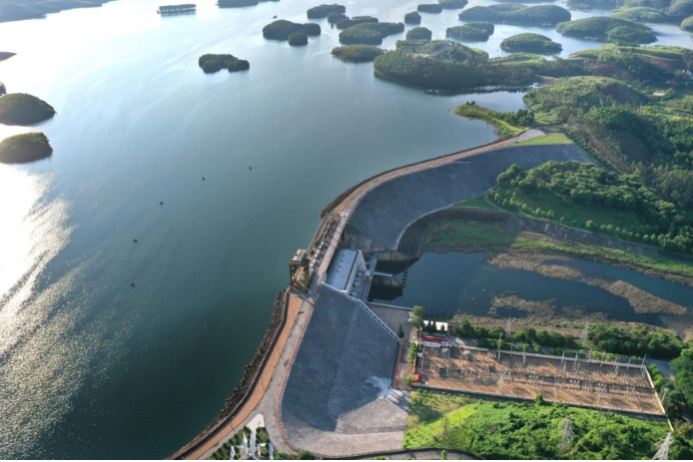The operation of reservoir systems—especially interconnected reservoirs—no longer relies on individual experience but is evolving into an intelligent, proactive, and flexible coordination network. This shift aims to ensure infrastructure safety, minimize natural disaster risks, and optimize water resources for socio-economic development.
From experience to real-time data
According to Mr. Luong Van Anh, Deputy Director of the Department of Irrigation Management and Construction (Ministry of Agriculture and Environment), the current multi-reservoir operation process cannot rely solely on traditional experience. Coordinating water flow and discharge requires integrating real-time data from monitoring stations and mathematical models to balance interests between power generation, agriculture, daily use, and environmental protection.
Previously, each reservoir was managed independently without connectivity or synchronization. However, since 2015, the irrigation sector has started applying modern simulation tools such as MIKE 11, SWAT, WEAP, GIS maps, and environmental sensors to build water regulation scenarios for drought, minor floods, or saltwater intrusion. Thanks to this, between 2019 and 2021, water supply for winter-spring crop production in the midlands and northern delta saved between 1.4 and 1.8 billion cubic meters annually while maintaining planting areas.
Technology is the key
Vietnam has over 7,300 dams and irrigation reservoirs with a total capacity of approximately 15.2 billion cubic meters. However, only about 28% have established operation procedures, and just 17% are equipped with specialized meteorological and hydrological monitoring devices. Deputy Minister of Agriculture and Rural Development Nguyen Hoang Hiep emphasized that current operations must meet multiple objectives: irrigation, power generation, drought control, flood prevention, infrastructure safety, and support for other economic activities.
The lesson from Typhoon No. 3 in 2024—when many reservoirs had to coordinate across regions to control water flow—highlighted the pressures on the existing management system. Many reservoirs have operated for decades without thoroughly assessing their capacity, resulting in significant discrepancies between design and real exploitation.
 Digital transforming the irrigation sector. Photo: Illustration.
Digital transforming the irrigation sector. Photo: Illustration.The irrigation sector recognizes that digital transformation is not just about digitizing records or installing more devices but involves redesigning the entire operation system. The new digital architecture comprises four layers: infrastructure, data, technology, and management services. Data from hundreds of reservoirs, rainfall stations, cameras, and drones are collected, analyzed, and synchronized in real-time, creating an intelligent operational ecosystem.
At the application layer, models such as Digital Twin, MIKE Flood, TELEMAC, and Decision Support Systems (DSS) are integrated to provide early warnings for risks like drought, saltwater intrusion, and flooding. Bac Giang, Ha Tinh, and Ninh Thuan provinces are leading in testing multi-purpose reservoir operations supported by mathematical models and real-time data.
Towards community engagement and open operation
The irrigation sector is not only focused at the management level but gradually involves local people as active system users. Services such as water extraction permits, infrastructure maintenance, and irrigation fee payments are being digitized. Mobile applications provide residents with irrigation schedules, water level notifications, and even early warnings of incidents.
“We don’t just want people to benefit passively but to participate in the management process. Field feedback is crucial to adjust models and build scenarios that closely reflect reality,” Mr. Luong Van Anh emphasized.
Optimizing multi-reservoir operations is not merely a technical challenge but a strategic step toward climate change adaptation, sustainable development, and effective water resource governance. With a solid data foundation and modern technology, Vietnam’s irrigation sector is transforming into an intelligent coordination system—where every liter of water is used efficiently and flexibly for multiple purposes.